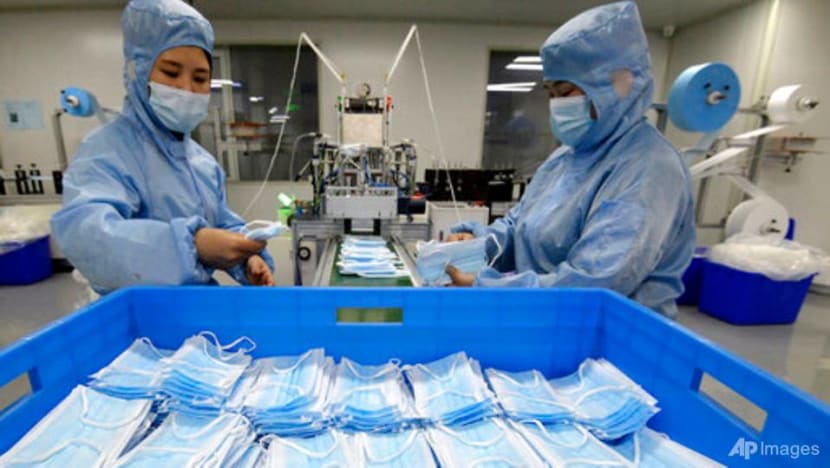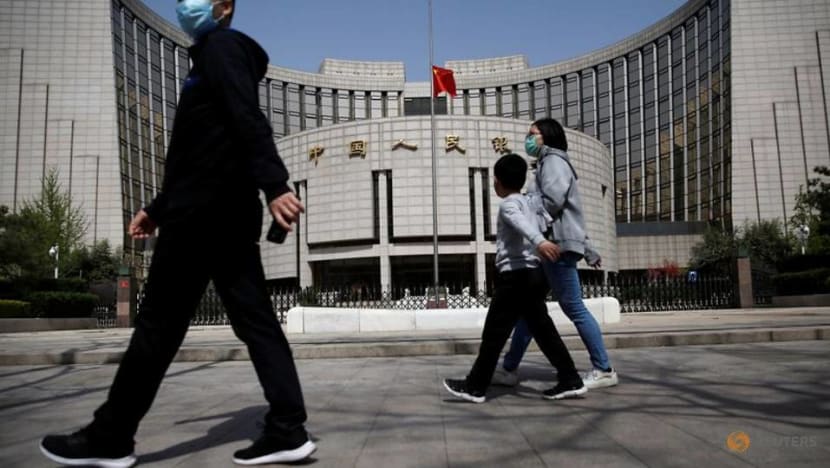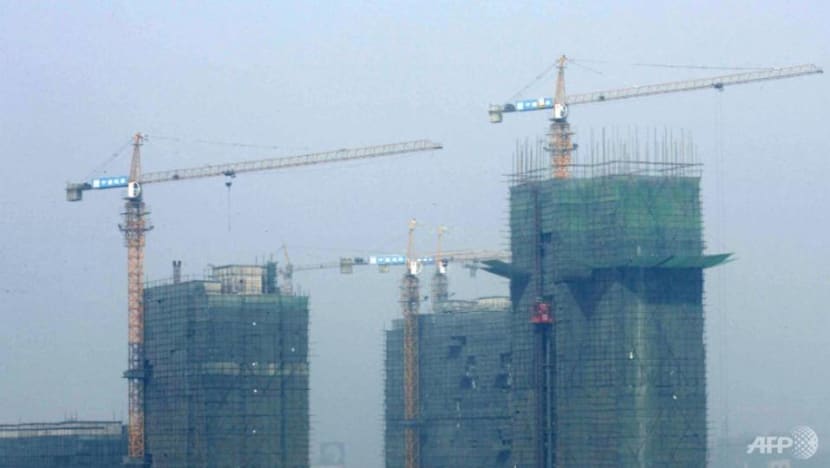commentary Commentary
Commentary: It's too early to slow down the Chinese economy
While the economy’s growth momentum looks strong at the moment, there are signs that China may risk tightening fiscal and monetary policy too soon, says Yu Yongding.

(Photo: AP)
BEIJING: The Chinese economy grew by 6.5 per cent in the fourth quarter of 2020, providing a strong indication that it has recovered from the COVID-19 shock.
The market consensus is that, due to base effects, GDP growth shot up to more than 18 per cent year on year in the first quarter of 2021, and will fall steadily in the remaining three quarters of the year before finally stabilising.
Addressing this year’s meeting of the National People’s Congress last month, Prime Minister Li Keqiang announced that China’s growth target for 2021 is “above 6 per cent”.
While the economy’s growth momentum looks strong at the moment, there are signs that China may risk tightening fiscal and monetary policy too soon.
READ: Commentary: How China will try to subdue Taiwan – without firing a bullet
READ: Commentary: China’s pineapple ban another prickle in relations with Taiwan
CHINA’S FINANCIAL VULNERABILITY HAS BEEN EXAGGERATED
According to the Ministry of Finance, general budget revenues will increase by 8.1 per cent this year, while general budget expenditures will grow by just 1.8 per cent. It is rare for government spending to grow so much more slowly than budget revenues.
And although the government’s planned issuance in 2021 of 7.2 trillion yuan (US$1.1 trillion) in bonds is still high, it is materially smaller than the 8.5 trillion yuan it issued last year.
At the same time, the People’s Bank of China (PBOC, the central bank) is likely to maintain its monetary policy stance, if not tighten it.
The Chinese government’s cautious attitude toward expansionary macroeconomic policy reflects its vigilance regarding inflation and financial risks – especially the latter. Though inflation may worsen somewhat in the near future, it is unlikely to be economically destabilising.

While China should pay great attention to the problem of high leverage ratios, its financial vulnerability has been exaggerated. It is difficult to imagine how a high-saving, high-growth economy, with huge state-owned assets at its disposal and limited foreign debt, can be brought down by a systemic financial crisis resulting from high leverage ratios.
In my view, therefore, China’s macroeconomic policy in 2021 should focus on boosting growth in line with the economy’s potential growth rate, rather than on stabilising or lowering leverage ratios.
Assuming that China’s potential growth rate is 6 per cent, back-of-the-envelope calculations show that, taking the base effect into consideration, the economy should expand by more than 8 per cent this year.
READ: Commentary: China’s foreign loans, as a recent study shows, is full of ‘Chinese characteristics’
GROWTH DRIVEN BY FIXED-ASSET INVESTMENT AND EXPORTS
China’s growth in 2020 was driven by fixed-asset investment and exports. This pattern is not ideal.
But unless the steady increase in disposable incomes resulting from strong GDP growth has convinced Chinese consumers that sunny days are here to stay, households are not likely to spend more and deplete their savings.
In fact, household spending growth, in terms of total retail sales of social consumer goods, weakened in the first two months of 2021. Moreover, exports probably will contribute less to China’s GDP growth in 2021 than they did last year, owing to the global economic recovery and base effects.
READ: Commentary: China more focused on getting rich than it is in stoking US rivalry
Fixed-asset investment, which comprises three main categories – real estate, manufacturing, and infrastructure – has grown strongly, but its sequential growth rate has started to fall.
Real-estate investment accounted for the bulk of fixed-asset investment growth in 2020, but this is unlikely to be repeated in 2021. And it is highly uncertain whether manufacturing investment can become the mainstay of investment growth.
SUPPORT FOR INFRASTRUCTURE INVESTMENT NEEDED
So, to compensate for the aggregate demand shortfall, the government has no alternative but to use expansionary fiscal and monetary policy to support infrastructure investment. In 2020, infrastructure investment grew by just 0.9 per cent, compared to more than 40 per cent in 2009.

Whether a government’s budgetary plan is appropriate depends on the country’s indicative or mandatory growth target. To achieve annual growth of 8 per cent in 2021, China needs a much larger increase in infrastructure investment than last year.
Furthermore, such investment should be financed directly through government budgets rather than by bank loans to subnational authorities.
In hindsight, the central government should have issued enough bonds to fund the 4 trillion yuan stimulus package in 2008 to 2010 rather than leaving local governments to borrow from banks to finance infrastructure investment through local government financing vehicles.
Doing so would have avoided the financial vulnerability created by local government debts and shadow-banking activities, and also given China’s government-bond market an ideal opportunity to develop.
READ: Commentary: Embattled China knows its national priority is the economy
In 2021, the government may need to issue more bonds than planned, and the PBOC may need to lower the interest rate to facilitate this – if necessary, by going so far as to implement a variant of quantitative easing.
Needless to say, macroeconomic policy alone will not be enough. The authorities should implement many more structural reforms so that all economic actors, especially local governments, have the right incentives to respond actively and reasonably to stimulus measures.
But to consolidate its post-pandemic growth momentum in 2021, China should not be in a hurry to exit from expansionary fiscal and monetary policy.
Yu Yongding, a former president of the China Society of World Economics and director of the Institute of World Economics and Politics at the Chinese Academy of Social Sciences, served on the Monetary Policy Committee of the People’s Bank of China from 2004 to 2006.












